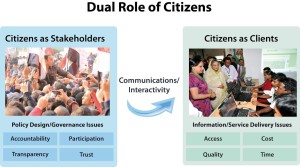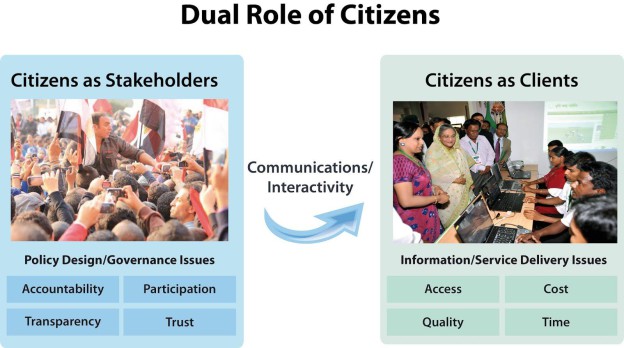 The paper on the role of governments in crowdsourcing I presented at the last ICEGOV 2014 gathering in Guimaraes, Portugal, is now available here – in this blog. The paper was supposed to be published by ACM Press as part of the proceedings of ICEGOV. However, the proceedings are still unavailable on the ICEGOV or ACM sites. In any event, we have chosen a publishing license allowing authors to publish the paper on their own websites. Note that copyright still applies to this material (please read the license before downloading the paper!).
The paper on the role of governments in crowdsourcing I presented at the last ICEGOV 2014 gathering in Guimaraes, Portugal, is now available here – in this blog. The paper was supposed to be published by ACM Press as part of the proceedings of ICEGOV. However, the proceedings are still unavailable on the ICEGOV or ACM sites. In any event, we have chosen a publishing license allowing authors to publish the paper on their own websites. Note that copyright still applies to this material (please read the license before downloading the paper!).
The paper makes a case for the government to harness crowdsourcing as one potential way to improve service delivery and foster people’s participation in selected public policymaking processes. First, it presents a governance-centered analytical framework and then considers three cases to assess the relevance of crowdsourcing for local governments. Finally, the paper concludes by presenting positive recommendations and some ideas for further research in this area, bearing in mind that the ultimate goal of government interventions is to enhance human development within specific contexts and not to innovate per se.
One issue the paper does not openly address is the role of governments in broader innovation processes and, particularly, in fostering social innovation in developing countries. While this can undoubtedly be the subject of another paper or another book, here are a few ideas.
The first one is a challenge. The mainstream view here is that governments cannot and should not innovate for various reasons, as this is essentially the purview of the private sector. In this perspective, the best government can set adequate policy and regulatory environments to foster innovation. Be that as it may, Mariana Mazzucato’s recent book The Entrepreneurial State sheds new light on this and makes a case for governments supporting innovation—note that the book is focused on industrialized countries.
 From the perspective of the public sector, innovation has a very different character from that of the private sector. Part of the reason for this stems from the fact that the public sector has the mandate to provide public goods, understood in a broader sense, to the people, such as health, education, national security and justice, to name a few. In other words, it has to create public value that can also be done in conjunction with non-state actors, as is the case of crowdsourcing, for example. The same goes for the implementation of policies and programmes aiming at enhancing the supply of public goods. Finally, note that the gap in the provision of public goods in poor developing countries is still huge, so this is a crucial issue for them.
From the perspective of the public sector, innovation has a very different character from that of the private sector. Part of the reason for this stems from the fact that the public sector has the mandate to provide public goods, understood in a broader sense, to the people, such as health, education, national security and justice, to name a few. In other words, it has to create public value that can also be done in conjunction with non-state actors, as is the case of crowdsourcing, for example. The same goes for the implementation of policies and programmes aiming at enhancing the supply of public goods. Finally, note that the gap in the provision of public goods in poor developing countries is still huge, so this is a crucial issue for them.
Government innovation can also play a role where private goods such as food, banking, etc., falter and do not reach most of the population. Such “market failures” can provide fertile ground for government innovation and seek new ways, again in partnership with non-state actors, to increase the supply of private goods and ensure that private actors fully furnish them in the medium term. Note that the provision of private goods tends to be financially more sustainable than public goods as clients of the former pay for such goods, usually at regular market prices, sometimes with state subsidies.
Governments can also promote innovation beyond just setting the regulatory environment at the policy level. This point is perhaps best illustrated by the example of the development of the Internet and Internet-related technologies in the US, where the government and public financing played a critical role. One of the essential aspects for the success of such a public enterprise was the fine distinction between policy prioritization and policy implementation. The government played a vital role in the former but, at the same, ensured that experts and critical academic institutions led the design and implementation of the network of networks.
This sounds a bit like “industrial policies,” which pick key “infant” industries and then provide support to private sector companies to develop them in a given country (South Korea is a good example here). In this light, innovation policies that foster crucial and strategic areas can provide formidable support to developing countries seeking new ways to be an integral part of the global economy. They can also foster national innovation capacities, allowing them to become innovation producers, not just consumers, and effectively tackle significant human development gaps.
Cheers, Raúl

